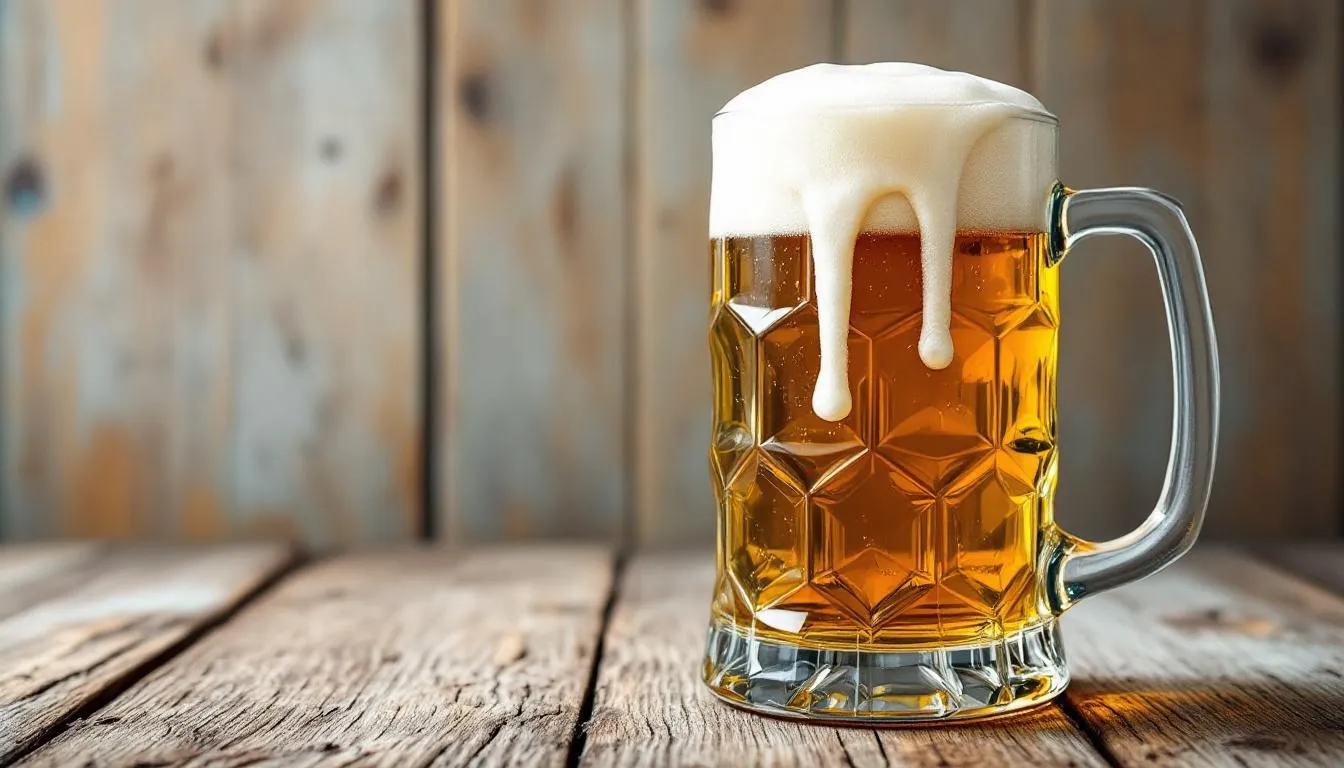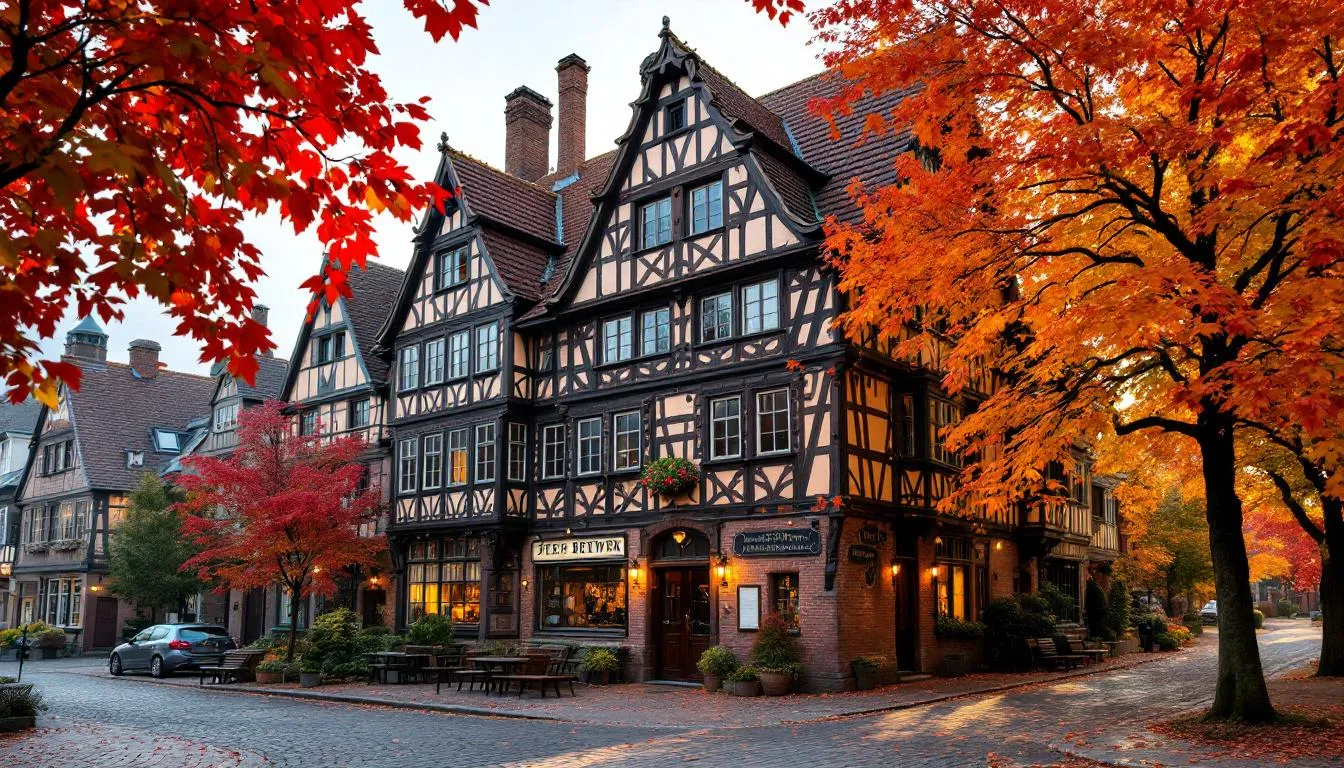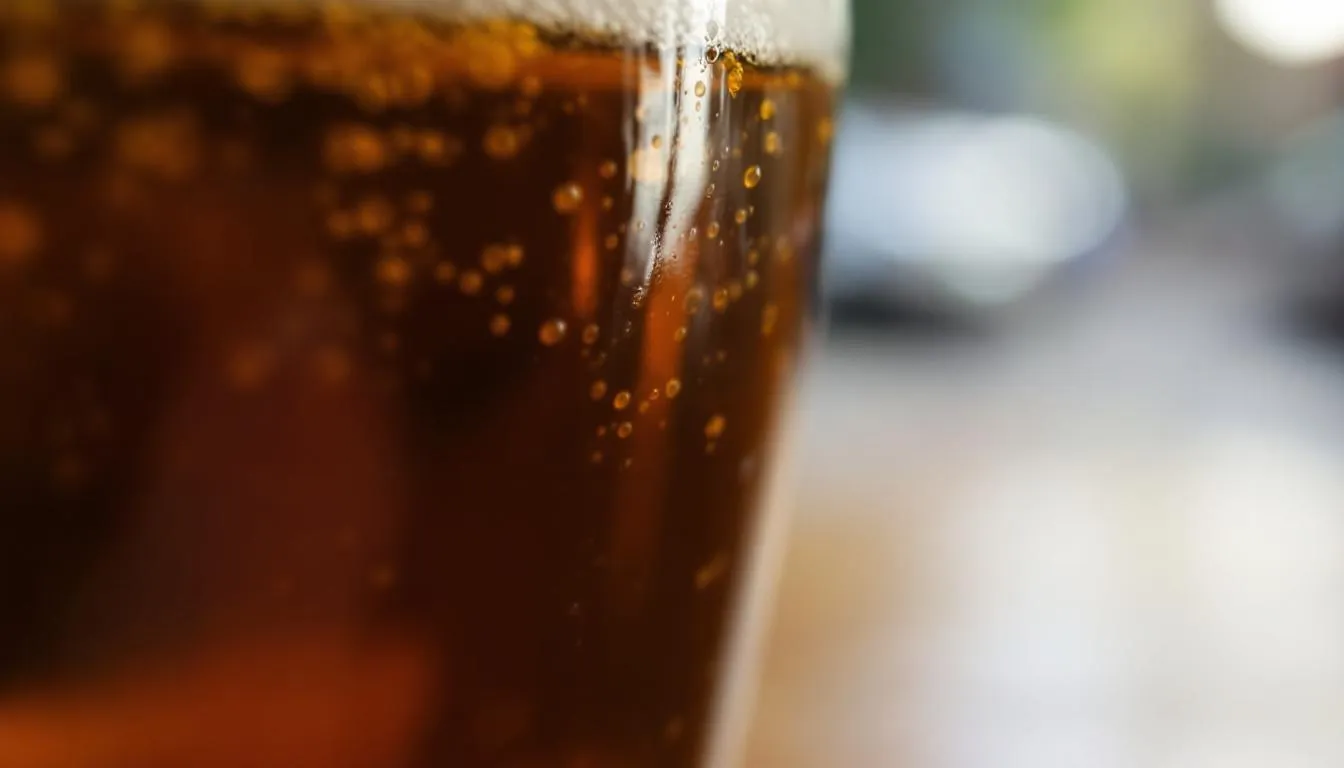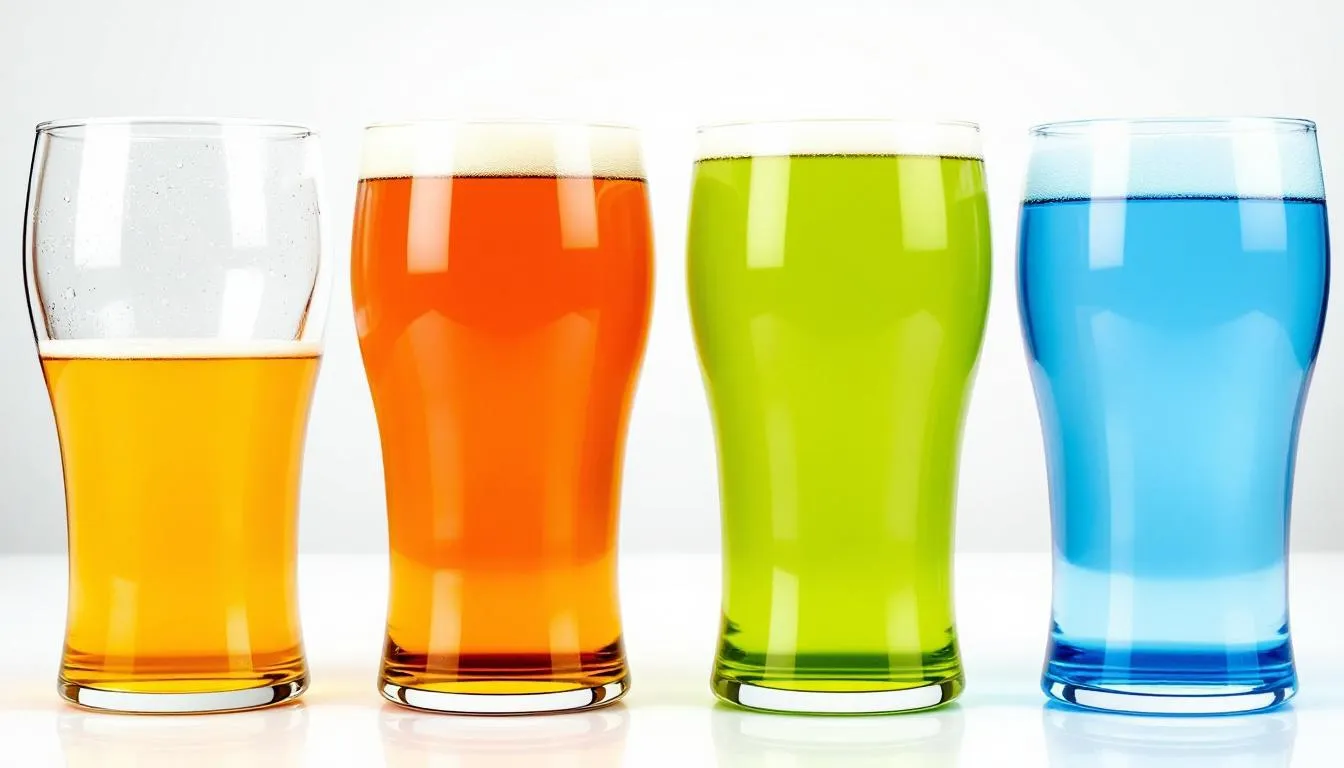When you raise a glass of rich amber beer at an Oktoberfest celebration, you’re likely drinking a style that connects modern beer drinkers to centuries of German brewing tradition. Märzen beer represents one of Bavaria’s most celebrated contributions to the brewing world, offering a perfect balance of malty richness and clean lager character that has captivated drinkers across countries for generations.
This traditional german lager embodies the craftsmanship and innovation of southern germany’s brewing heritage, evolving from practical necessity into one of the most beloved beer styles in the world. Whether you’re a seasoned beer enthusiast or someone developing an interest in craft brewing, understanding märzen opens a window into the rich history and technical mastery that defines German lager brewing.

What is Märzen Beer?
Märzen is a traditional German amber lager originating from Bavaria, also known as march beer or Märzenbier. The word “Märzen” derives from “März,” meaning March in German, reflecting the historical brewing schedule that defined this style for centuries. This märzen style beer delivers a medium to full body with distinctive characteristics that set it apart from lighter German lagers.
The style overview reveals a beer that strikes an elegant balance between rich, toasty malt character and restrained bitterness. Unlike the pale pilsner styles that dominate modern beer markets, Märzen showcases the complexity that munich malt and traditional brewing techniques can achieve. The beer presents an amber to copper color range, typically measuring 8-17 SRM on the brewing color scale, with a bready malt flavor that forms the foundation of its appeal.
Märzen holds tremendous historical significance as the beer that was traditionally served at Munich Oktoberfest from 1870 until modern times, when the lighter style called festbier gradually took over festival service. This connection to Oktoberfest celebrations helped spread the style’s popularity far beyond bavaria’s borders, making it a seasonal favorite in breweries across multiple countries.
In modern brewing, Märzen falls under category 6A in the Beer Judge Certification Program (BJCP) style guidelines, providing craft brewers with clear parameters for creating authentic interpretations. The style has found new life among craft breweries worldwide, with many brewers releasing seasonal märzen offerings that honor traditional techniques while incorporating local ingredients and inspiration.
History and Origins
The story of Märzen begins with practical necessity and government regulation in medieval Bavaria. In 1553, a Bavarian decree established a law that banned brewing during the warm summer months, specifically from April to September, to prevent beer spoilage during periods when refrigeration didn’t exist. This regulation fundamentally shaped brewing practices throughout southern germany and created the conditions that would give birth to the march beer tradition.
The March brewing tradition emerged as brewers adapted to these seasonal restrictions by developing stronger, more durable beers in early spring that could survive storage through the summer and autumn months. These march beers were lagered in cool cellars and caves, developing the smooth, clean character that defines the style today. The extended aging process, combined with higher alcohol content, helped preserve the beer during the warmer months when brewing was prohibited.
A pivotal milestone occurred in 1841 when Spaten Brewery of Munich introduced the first official Märzenbier at the Oktoberfest festival. This marked the beginning of Märzen’s association with Bavaria’s most famous celebration, establishing a tradition that would define both the festival and the beer style for over a century. The brewery’s innovation combined traditional lagering techniques with the rich malt bill that characterizes authentic Märzen.

The Oktoberfest connection deepened from the 1870s onward, when Märzen became the official beer served at Munich’s annual celebration. For over a century, visitors from around the world associated this amber lager with Oktoberfest, creating global demand for the style. However, in recent decades, lighter Festbier has gained popularity at the actual Munich festival, though traditional Märzen remains the beer most drinkers associate with Oktoberfest celebrations worldwide.
The name etymology reflects this historical brewing schedule perfectly. “Märzen” literally means “of March” in German, commemorating the month when brewers would produce their final batches before the summer brewing ban took effect. This linguistic connection preserves the practical origins that shaped the style’s development and reminds modern brewers of the seasonal rhythms that once governed beer production.
Style Characteristics
Appearance
The color range of authentic Märzen spans from amber to copper-brown, typically measuring 8-17 SRM on the brewing color scale. This distinctive amber hue comes primarily from the use of munich malt and traditional kilning techniques that develop deeper colors without introducing roasted flavors. The beer should never appear pale or golden, as these lighter colors indicate deviation from traditional Märzen character.
Clarity represents another crucial visual element, with properly brewed Märzen appearing clear to brilliant in the glass. Good head retention creates a persistent white to off-white foam that forms an attractive crown above the amber liquid. The visual appeal of this rich amber beer immediately signals its malt-forward character to drinkers, setting expectations for the flavor experience to follow.
The overall visual presentation should convey substance and quality, with the rich amber hues ranging from pale amber to dark copper depending on the specific malt bill used. When served in traditional glass mugs or steins, the beer’s color becomes even more pronounced, creating the classic Oktoberfest appearance that many beer enthusiasts recognize instantly.
Flavor and Aroma
The malt character forms the heart of Märzen’s appeal, delivering rich, toasty, bready malt flavors with notes of caramel, toffee, and biscuit. This complexity comes from the careful selection of base malt varieties, particularly munich malt, which contributes both color and flavor depth. The bready malt flavor should be prominent but never overwhelming, creating a foundation that supports rather than dominates the overall balance.
Hop presence in traditional Märzen shows restrained bitterness that allows the malt to dominate while providing necessary balance. German noble hops contribute subtle herbal or spicy notes that complement rather than compete with the malt profile. This restrained approach to hopping distinguishes Märzen from more assertive beer styles and maintains focus on the malt’s complexity.
The finish should be clean and well-attenuated, with lingering malty sweetness that invites another sip without becoming cloying. This balance between richness and drinkability made Märzen ideal for extended festival drinking sessions. The overall balance leans heavily toward malt-forward character, but skilled brewers ensure the beer never tastes heavy or overly sweet.

Technical Specifications
The alcohol by volume range typically spans 5.6-6.3% ABV, making Märzen stronger than typical German lagers while remaining highly drinkable. This alcohol content reflects the historical need for preservation during long storage periods, when higher alcohol helped prevent spoilage. Modern brewers maintain this strength range to preserve authentic character while ensuring the beer remains sessionable.
Original gravity measurements fall between 1.054-1.060, providing the substantial body and mouthfeel that distinguishes Märzen from lighter lager styles. This gravity range generates enough fermentable sugars to produce the desired alcohol content while contributing to the beer’s satisfying weight in the mouth. The higher starting gravity also supports the complex malt flavors that define the style.
Bitterness levels typically measure 18-24 IBUs, representing moderate and restrained hopping that highlights rather than masks the malt character. This bitterness range provides sufficient balance to prevent cloying sweetness while maintaining the malt-forward profile that defines authentic Märzen. The color specification of 8-17 SRM encompasses the full range from light amber to copper-brown that characterizes properly brewed examples.
Brewing Process
Key Ingredients
Munich malt typically comprises 40-60% of the grain bill, providing the characteristic amber color and rich malt flavors that define Märzen. This specialty malt undergoes specific kilning processes that develop toasty, bready flavors without introducing roasted or burnt characteristics. The proportion of munich malt directly influences both the beer’s appearance and its flavor intensity, making ingredient selection crucial for authentic results.
German Pilsner malt usually forms 40-50% of the malt bill, serving as the fermentable base malt that supports clean lager character. This base malt provides the necessary enzymes for conversion while contributing crisp, clean flavors that balance the richness of munich malt. The combination of these two primary malts creates the foundation upon which all other flavors build.
Specialty malts play supporting roles, with small amounts of vienna malt, Melanoidin malt, or light caramel malts adding complexity without overwhelming the core character. These additions typically represent less than 10% of the total malt bill, providing subtle flavor enhancements that deepen the overall profile. Brewers must use these specialty malts judiciously to avoid introducing inappropriate caramel or roasted flavors.
Noble hops, particularly German varieties like Hallertauer, Tettnang, or Spalt, provide the subtle, refined bitterness that characterizes authentic Märzen. These hops contribute herbal and spicy notes that complement the malt without competing for attention. The choice of hops significantly impacts the final balance, making variety selection as important as timing and quantity.
Lager yeast strains, often Oktoberfest-specific cultures like WLP820, ferment cleanly at cool temperatures while developing the smooth character expected in premium lagers. These yeast strains work slowly and methodically, producing minimal esters or off-flavors that might interfere with the malt’s expression. The yeast selection influences both fermentation performance and final flavor development.
Traditional Techniques
Decoction mashing represents the traditional German method for developing enhanced malt character by boiling portions of the mash and returning them to the main vessel. This technique increases melanoidin development and deepens flavor complexity while maintaining the clean profile essential to lager brewing. Many traditional breweries still employ decoction mashing for their premium Märzen offerings, though the process requires significant time and skill.
The two-step mash provides a modern approach using low temperature rests (140-145°F) followed by higher temperature rests (150-155°F) to achieve proper conversion and body. This simplified method can achieve similar results to decoction while reducing time and complexity, making it popular among craft brewers who lack traditional equipment or experience.
Cool fermentation at 50-55°F for 2-3 weeks with German lager yeast develops the clean, smooth character that distinguishes quality lagers from ales. This extended primary fermentation allows the yeast to work slowly and completely, minimizing stress-related off-flavors while maximizing attenuation. Temperature control during fermentation proves critical for achieving authentic results.
Extended lagering involves 6-8 weeks of cold conditioning at near-freezing temperatures, allowing the beer to smooth and mature while developing its characteristic clarity and refined flavor. This aging process, conducted in a cellar or temperature-controlled environment, historically occurred in caves during the summer months. The patient aging process cannot be rushed without compromising final quality.
Water profile considerations include the moderate mineral content typical of Munich brewing water, which supports malt expression while providing sufficient minerals for healthy yeast activity. Modern brewers often adjust their local water to approximate Munich’s profile, ensuring optimal conditions for traditional Märzen production.
Märzen vs Other Oktoberfest Styles
The distinction between Märzen and Festbier represents one of the most important comparisons for understanding modern Oktoberfest beer. Märzen is darker, richer, and more intensely toasted than the modern Festbier that now dominates Munich’s actual Oktoberfest celebration. While both styles share German origins and festival associations, they offer distinctly different drinking experiences.
Vienna lager shares a historical connection with Märzen through the use of vienna malt, but typically presents as lighter and hoppier than traditional Märzen. Both styles emerged during the 19th century as brewers explored new malting techniques, but vienna lager developed along different paths that emphasized hop character alongside malt complexity. Understanding this relationship helps brewers and drinkers appreciate the family of amber lager styles.
The Oktoberfestbier designation carries EU protection, reserved specifically for beers brewed by the six traditional Munich breweries that serve the official festival. This legal protection ensures that only authentic Munich-brewed beers can claim the Oktoberfestbier name within European markets, though enforcement varies in other countries around the world.

American interpretations often blur style lines, creating hybrid Oktoberfest lagers that incorporate elements from multiple Germanic traditions. Craft brewers frequently experiment with local ingredients while maintaining respect for traditional techniques, resulting in new beer expressions that honor historical roots while reflecting regional preferences and ingredient availability.
The modern evolution shows how traditional darker Märzen gradually gave way to lighter Festbier at Munich’s Oktoberfest, reflecting changing consumer preferences for more sessionable beers during extended festival drinking. This shift occurred gradually over several decades, with individual breweries making independent decisions about their festival offerings while maintaining traditional Märzen production for other markets.
Notable Examples to Try
German classics provide the gold standard for authentic Märzen character, with Paulaner Märzen, Hacker-Pschorr Oktoberfest Märzen, and Augustiner Oktoberfest representing traditional excellence. These breweries maintain centuries-old traditions while employing modern quality control, producing beers that showcase the style’s potential when crafted with proper ingredients and techniques. Each brewery brings subtle variations while maintaining core Märzen characteristics.
American craft examples demonstrate how traditional techniques translate to new brewing environments, with Great Lakes Oktoberfest, Sierra Nevada Oktoberfest, and Samuel Adams Oktoberfest earning recognition for quality and authenticity. These brewers respect traditional guidelines while incorporating American ingredients and brewing innovations, creating approachable interpretations that introduce new drinkers to the style’s appeal.
Regional favorites highlight the style’s adaptation to local markets and ingredients, with examples like Two Roads Ok2berfest from Connecticut and Warped Wing Lagerstadt from ohio showcasing regional brewing creativity. Local breweries often develop devoted followings for their seasonal märzen offerings, creating anticipation and community around fall beer releases.
Seasonal availability typically runs from late August through October, reflecting both traditional brewing schedules and modern market demand for autumn seasonals. Many breweries time their releases to coincide with local Oktoberfest celebrations and fall festivals, creating a concentrated period when multiple märzen options become available to consumers interested in exploring the style.
Food pairing opportunities abound with märzen’s rich malt character, making it excellent with BBQ, roasted meats, German sausages, and tomato-based dishes. The beer’s substantial body and toasty flavors complement hearty autumn foods while its clean finish prevents palate fatigue during extended eating sessions. Traditional German cuisine naturally pairs well, but the style’s versatility extends to American comfort foods and seasonal favorites.
The growing interest in traditional lager styles has inspired more breweries to offer year-round märzen availability, though many drinkers still associate the style primarily with fall drinking. This seasonal association creates marketing opportunities for breweries while maintaining the style’s special character as an autumn celebration beer.
Proper serving involves chilled temperatures around 45-50°F in appropriate glassware that showcases the beer’s amber color and supports head retention. Traditional steins or mugs enhance the drinking experience while connecting drinkers to the style’s cultural heritage, though modern beer glasses work equally well for flavor evaluation and appreciation.
Storage considerations include protecting bottles from light and heat while maintaining cool, stable temperatures that preserve the beer’s delicate balance. Most märzen examples benefit from consumption within 6-12 months of production, though some premium examples can age gracefully for longer periods when stored properly.
The association between märzen and Oktoberfest celebrations worldwide ensures continued interest in the style, even as drinking preferences evolve toward lighter beers in some markets. This cultural connection provides stability for breweries that invest in traditional techniques and quality ingredients necessary for authentic märzen production.
Conclusion
Märzen beer represents far more than just another entry in the crowded amber lager category – it embodies centuries of German brewing wisdom and the seasonal rhythms that once governed beer production across Bavaria. From its origins as a practical solution to summer brewing restrictions to its modern status as a craft brewing favorite, this traditional style has proven its enduring appeal to drinkers seeking complexity and character in their glass.
Understanding märzen opens doors to appreciating the broader family of German lager styles while providing insight into the techniques and ingredients that create truly exceptional beer. Whether you’re exploring German classics or discovering local craft interpretations, each märzen offers a taste of brewing history combined with the clean, satisfying character that has made German lagers the world’s most popular beer category.
As autumn approaches and Oktoberfest celebrations begin around the world, seek out authentic märzen examples to experience this historic style’s unique combination of rich malt character and refreshing drinkability. The seasonal availability of many märzen offerings makes fall the perfect time to explore different breweries’ interpretations while the style remains at peak availability and freshness.

Leave a Reply